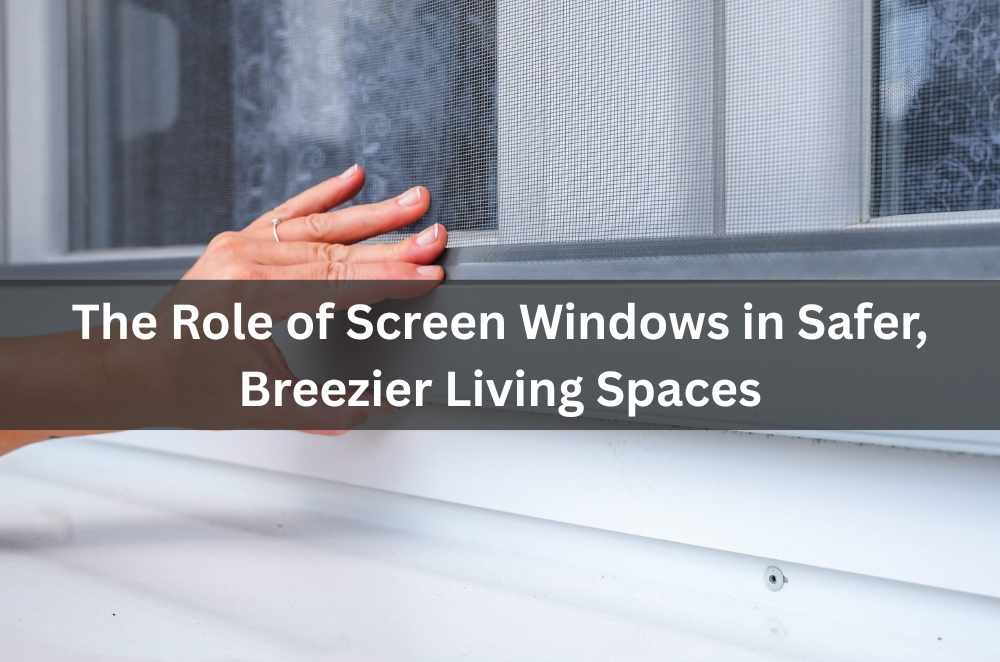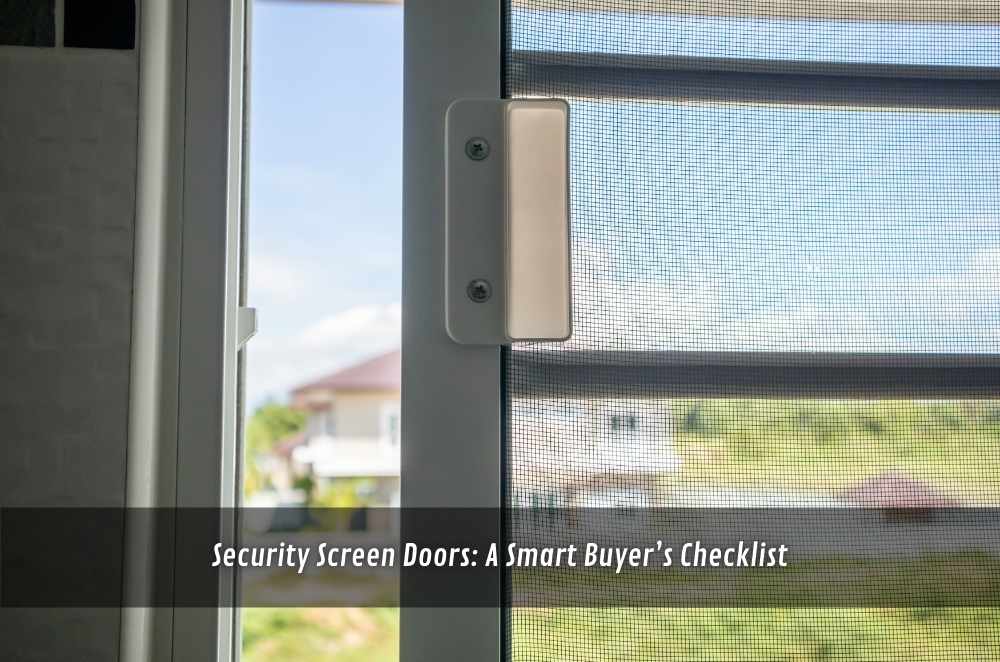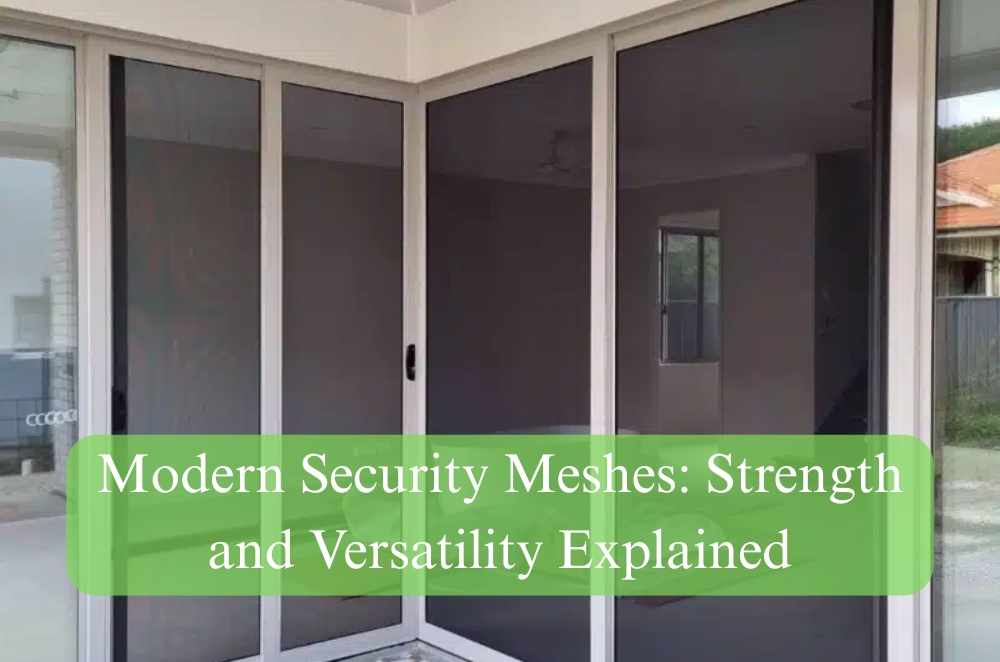
First warm week of spring, I cracked the windows for a cross-breeze and realised how much the house relied on mesh for comfort and calm. Fresh air flowed, insects stayed out, and the living room felt quieter even with the street a block away. That’s the quiet value of well-designed mesh: airflow without compromise. For a practical overview of mesh, frames, and locking profiles in a windows-first context, homeowners often review secure screen windows near ScreenGuard’s product family; it anchors decisions in real specifications rather than guesswork.
How mesh supports airflow while hardening access
Air movement and protection are not opposites. With the right mesh spec and frame geometry, windows feel open while resisting forced entry.
Mesh aperture: Small, uniform openings keep insects out while letting breeze move through freely.
Wire or strand strength: High-tensile strands resist cutting and deformation under load and wear.
Open area ratio: Balanced void percentage maintains airflow without telegraphing glare indoors.
Frame rigidity: Deep, reinforced sections keep the mesh taut so it doesn’t drum in gusts.
Put simply, airflow is a design variable you can tune—mesh aperture, open area, and frame stiffness work together so “open” still feels secure.
Reading rules without the headache
Safety expectations for habitable rooms, fall prevention, and emergency egress sit alongside day-to-day usability. Clear guidelines help you choose hardware that meets both the letter and the spirit of the rules.
Bedroom escape logic: Windows in sleeping spaces often need quick-release pathways that remain intuitive.
Fall prevention: Restrictors and screens must manage opening size at height without trapping occupants.
Latch clarity: Levers, keys, or snibs should be operable under stress and visible at a glance.
Fixing standards: Fasteners and sub-frames need to match the substrate, not just the brochure.
For context on building-side requirements around openings and child safety, NSW guidance on window safety regulations outlines obligations in plain terms, which you can align with your mesh and frame choices.
Materials that change what you feel (and see)
The way air feels through a screen—and how the outside looks from the sofa—comes down to a few material choices you can weigh calmly.
Stainless grades: Marine or architectural grades resist corrosion and pitting in coastal air.
Powdercoat quality: Durable finishes limit chalking ,so frames keep colour and shed heat evenly.
Optical neutrality: Darker meshes tend to disappear visually, improving view-through and contrast.
Seal integrity: Continuous gaskets reduce whistle and dust ingress when wind angles shift.
A small matrix—mesh grade, aperture, colour—goes further for comfort than any single headline feature.
Whole-home planning with windows first
Treat windows as the lungs of the house; doors join the system rather than lead it. Planning that way keeps airflow steady without scattered hardware decisions.
Cross-flow mapping: Locate intake and relief windows so breezes have a path, not a dead end.
Zonal thinking: Bedrooms want gentle overnight air; kitchens want purge power after heat spikes.
Noise tuning: Screens facing the street may favour heavier frames to quiet vibration in gusts.
Door alignment: Entry points can support flow, but windows do the daily ventilation heavy lifting.
If you’re sense-checking broader entry hardware alongside your window plan, a practical security screen doors checklist pairs naturally with mesh-first window choices without shifting focus away from windows.
Configuration details that boost breeze and security
A few small choices add up to noticeable comfort—less fan time, quieter rooms, and fewer sticky nights.
Hinge and slider pairing: Opposing a hinged casement with a slider opens pressure paths for a stronger draw.
Reveal depth: Slightly deeper reveals protect mesh from wind-driven rain while keeping the aperture clear.
Latch placement: Waist-high latches reduce fumbling, which matters during late-night checks.
Maintenance reach: Panels that lift out safely make cleaning salt and pollen straightforward.
Independent summaries of windows with security screens often highlight how discreet mesh and stiff frames preserve airflow and sightlines without shouting “security.”
Care habits that keep airflow high and noise low
Screens earn their keep when they stay clean and tight. A low-effort routine keeps the mesh breathing and the frame quiet.
Seasonal wash: Soft brush and mild soapy water clear dust film that throttles air.
Salt check: Coastal homes need extra rinses to keep corrosion at bay between seasons.
Fastener audit: A yearly tweak on fixings prevents chatter and restores mesh tension.
Gasket health: Replace tired seals so wind can move without whistles and rattles.
These are ten-minute tasks that pay back with quieter nights and less temptation to slam windows shut and reach for the AC.
Common errors that choke airflow or weaken security
Most issues I’m called to assess come from avoidable mismatches—good products, wrong setup.
Oversized aperture: Big mesh openings feel breezy but invite insects and reduce strand strength.
Under-spec frames: Narrow profiles flex, loosen latches and let the mesh flutter.
Random placement: Screens on leeward windows only won’t deliver cross-flow when heat builds.
Neglected seals: Cracked gaskets turn breezes into whistles and dust ingress on windy days.
A short checklist during planning prevents years of workaround habits like wedging windows or running fans all night.
A short field note from a retrofit
Last summer, I retrofitted two rooms in a brick cottage that cooked by 4 pm. The brief sounded simple—“more air, fewer bugs”—but the fix came from mapping wind and using mesh as a deliberate airflow valve. We swapped a tired slider for a stiffer frame with high-tensile mesh, paired it with a smaller opposing awning window, and set latch heights where they’d be used without thinking. After a rinse and seal refresh on the other openings, the house started moving air on its own: a slow draw from the southern garden to the shaded hallway, then out through a western release. Even on warm nights, the bedrooms stayed calmer. No heroics—just windows that breathe through good mesh, frames that don’t hum in gusts, and hardware that wants to be used. That’s the role of screen windows when they’re treated as part of a system: safer, breezier rooms that stay open longer, with security sitting quietly in the background.






Write a comment ...